In late March 2013, IAT Maine board member Thomas Urquhart set off on the South Downs Way to again walk the hills he roamed as a young lad growing up in the south of England. Join him and his wife and sister as he recounts the sheep and grazing bunnies on Easter Sunday morn.
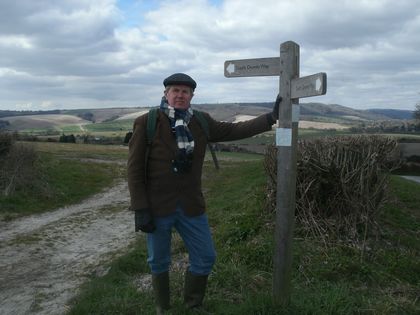
Maine Chapter IAT Board Member, Thomas Urqhart
Let’s be clear. There is very little “Appalachian” about England’s South Downs Way. It is made of chalk and flint laid down during the Cretaceous period, anything from 100 to 200 million years after the cataclysmic orogeny that threw up what we know as the Appalachians.
On the other hand, the South Downs Way taught me just about everything I know about nature, not least the pleasures of an extended walk punctuated by a thankful pint at a pub. So when the powers-that-be included their 90-plus mile footpath as an official part of the International Appalachian Trail, I was happy to reconcile geological punctilio with my life-long relationship with the hills that capture the gentle essence of the Sussex Weald.
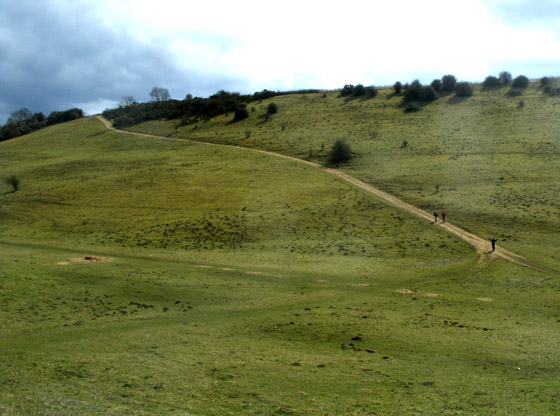
Last Easter morning, joined by my wife and sister, I took to the well-loved path up Amberley Mount. When they were being considered for national park status, there was some question as to whether this end of the South Downs would be included. Intensive agriculture has taken over a lot of the land where sheep and rabbits used to make the grass velvet-firm, and parts of it are undeniably degraded. Still, I always took this as a personal snub, and in the end Amberley Mount was included. It is, after all, one of the haunts of the rare Adonis Blue butterfly.
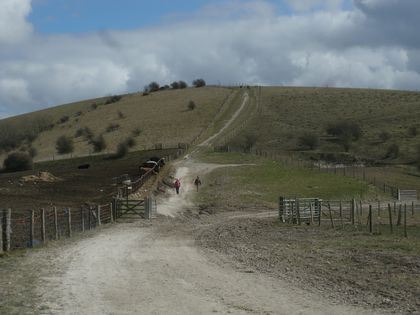
Amberly Mount
It was too early in the year for wheatears, but buzzards and red kites are thriving (as I found was the case all over southern England), a major change from when I was a boy and game-keepers everywhere ruthlessly suppressed them. So, too, are the wood pigeons in absurd numbers. Does no-one eat pigeon pie anymore?
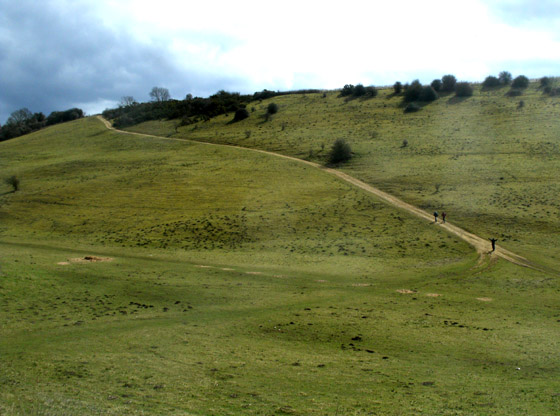
Downland Valley
Despite their protected status as a national park, the ploughing up of the shoulders of these beautiful hills continues to carve out still larger swathes of pale chalky soil at the expense of the lush green turf. And the taut, close barbed wire fences that surround them mean business in a way the few slack strands that allowed me to pursue my amateur archaeological passions in the same fields never did.
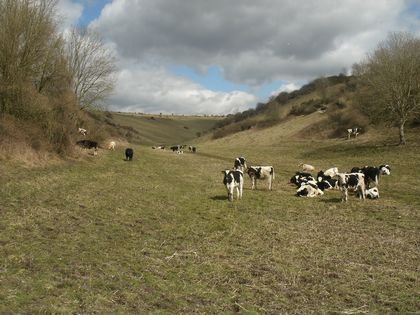
Cows Grazing in Downland Valley
But the slopes of the Downs are still voluptuously round, and when you have summited Amberley Mount (500 feet above sea level) you can see the sea (leaden gray on this last day of March) six or seven miles to the South. Their gentle forms roll east to end in the cliffs known as the Seven Sisters; west they continue the other side of the Arun River gap which holds back the water meadows called the Amberley Wild Brooks, still in flood after a wet winter.
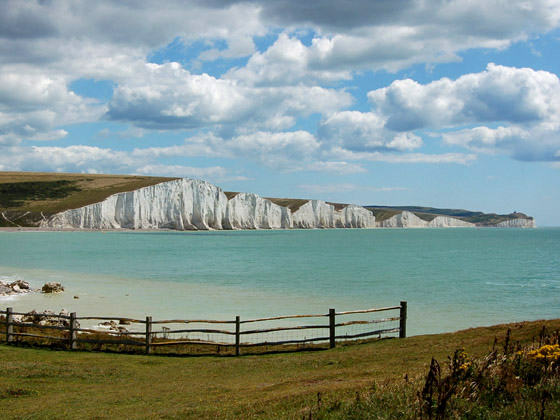
View of the Seven Sisters
At the foot of the Downs and perched on a ledge above the Wild Brooks, Amberley has long been recognized as one of England’s most picturesque villages. Until recently, walkers would find all their refreshment needs met at The Black Horse on the main street. Now the fate of that estimable hostelry hangs in the balance. Taking advantage of the endemic of pub-closings now wracking England, a developer has bought it and intends to convert it into a couple of high price residences.
But he has reckoned without the indomitable community spirit of Amberley. Every window in the village boasts a sign, ‘Save the Black Horse’. The grassroots energy and commitment are positively American.
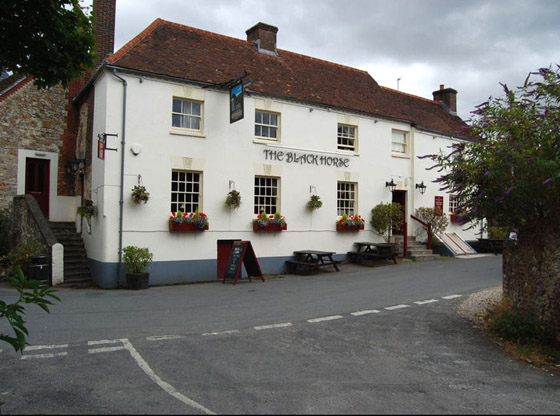
Blackhorse Pub in Amberly
Amberley has done it before. When the Drainage Board threatened the Wild Brooks a decade or so ago, they were sent packing, which had never happened to that powerful body before. And when a bridge over one of its many streams collapsed, the village got a squad of Her Majesty’s Ghurkas to rebuild it into a beautiful little suspension bridge.
Still, the developer is appealing. If you ever plan to come down off Amberley Mount in hopes of slaking your thirst, let the County Council know that you support the reopening of The Black Horse.
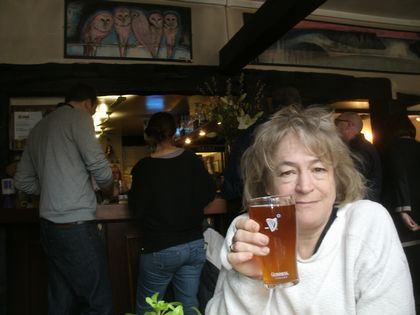
Amy Urquhart enjoying a Well-Deserved Ale … instead of an Easter Egg!
Thomas Urquhart is a board member of IAT Maine. His family – starting with his great-grandparents – has owned a house in Amberley for more than a century, and he has been enjoying the surrounding South Downs – first as a resident, more recently as a visitor – all his life. His love for this special region is described in his book, For the Beauty of the Earth.
